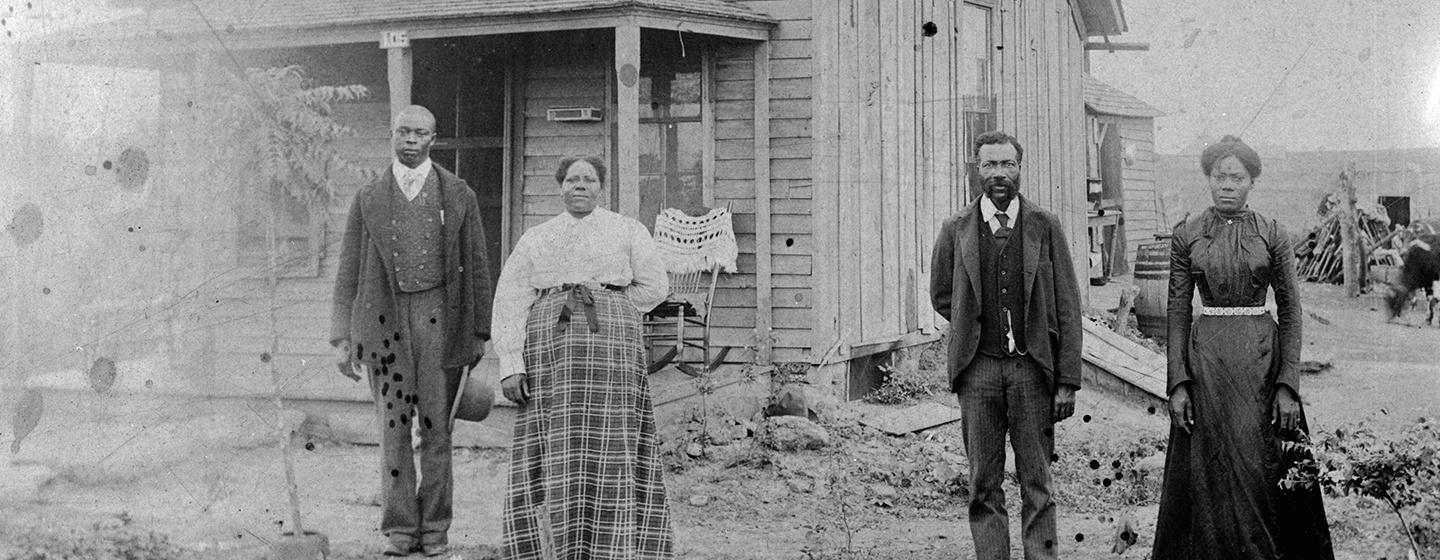Reconstruction: America After the Civil War
Monday, Nov. 9 & Tuesday, Nov. 10, at 8 PM
Repeats Thursday, Nov. 12 & Friday, Nov. 13, at 1:30 AM
Henry Louis Gates, Jr. presents the definitive history of one of the least understood chapters in American history—the transformative years following the American Civil War, when the nation struggled to rebuild itself in the face of profound loss, massive destruction and revolutionary social change.
The film takes a broad view of the Reconstruction era and its aftermath, beginning with the hopeful moment of war’s end and emancipation in 1865, and carrying through to 1915, when the nation was fully entrenched in Jim Crow segregation. In the aftermath of the Civil War, the nation was devastated by death and destruction. Members of the U.S. Congress endeavored to reunite North and South while granting citizenship rights to newly freed African Americans. Millions of former slaves and free black people sought out their rightful place as equal citizens under the law. The dream of an interracial democracy was brief, and the broken promises of the Reconstruction era haunt the country to this day. Though tragically short-lived, this bold democratic experiment was, in the words of W. E. B. Du Bois, a “brief moment in the sun” for African Americans, when they could advance and achieve education, exercise their right to vote, and run for and win public office.
The first half of the documentary centers on the pivotal decade following the Civil War rebellion, charting black progress and highlighting the accomplishments of the many political leaders who emerged to usher their communities into this new era of freedom. The series’ second half looks beyond that hopeful decade, when the arc of history bent backwards. Tracing the unraveling of Reconstruction and the rise of Jim Crow segregation in the closing years of the 19th century, the film also look at the myriad ways in which black people continued to acquire land, build institutions and strengthen communities amidst increasing racial violence and repression.
The film also explores the flowering of African American art, music, literature and culture as tools of resistance in the struggle against Jim Crow racism, and the surge of political activism that marked the launch of iconic civil rights organizations.
Monday, Nov. 8, at 8 PM
Part One: The aftermath of the Civil War was exhilarating and fraught, hopeful and violent. Four million newly freed African Americans faced the future untethered from the old plantation system, with few rights or protections, and surrounded by a war-weary and intensely resistant white population. Within a few months of war’s end, President Andrew Johnson’s lenient treatment of former Confederates incited a powerful response among Northerners, especially the Republicans in Congress. The result was tantamount to a second American revolution, in which former slaves and their allies forged new meanings of freedom and citizenship. In the first presidential election after the Civil War, African American men voting for the first time in the South helped send Republican war hero Ulysses S. Grant to the White House.
Part Two: Post-Civil War America was a new world. For African Americans living in the former Confederacy, now for the first time with citizenship and voting rights, they could begin to take charge of their own lives, families and communities. The first black men took seats in the U.S. Congress, in Southern state governments and on juries; black colleges opened and the Southern states’ first public school systems were organized; newly created black institutions flourished; and black families began buying land to farm and opened businesses to achieve a measure of independence from their former masters. But the progress did not last long. White reactionaries in the former Confederacy launched violent attacks to “redeem” their states, to re-establish the old order — a society built on white supremacy. Northern support for Reconstruction and military intervention in the South eventually faded, particularly with an economic depression in 1873. By the 1876 Presidential election, both leading candidates — Democrat and Republican — pledged to bring an end to Reconstruction.
Tuesday, Nov. 10, at 8 PM
Part Three: The years 1877-1896 were a transitional period that saw visions of a “New South” set the stage for the rise of Jim Crow and the undermining of Reconstruction’s legal and political legacy. With cotton still king in the South, sharecropping became the dominant economic fate for many black farmers, while convict leasing echoed slavery in new and harrowing ways. In 1883, the U.S. Supreme Court gutted the Civil Rights Act of 1875, making it legal for business owners to refuse to serve black patrons. In response to being denied access to public spaces, many African Americans created their own businesses and recreational spaces in the segregated South and other parts of the county. These “safe havens” could not protect from the growing onslaught of violence and lynching. Fredrick Douglass and Ida B. Wells were among the many key figures who wrote about the ills of lynching. Others like Isaiah Montgomery and Booker T. Washington took a more accommodationist approach to tackling injustice. Throughout this hour, African Americans continue to exercise agency over their lives, circumventing attacks and challenges as Jim Crow encroaches and Plessy v. Ferguson takes center stage at the U.S. Supreme Court, where “separate but equal” would become the law of the land.
Part Four: The turn of the 19th century to the 20th is known as the “nadir” of race relations in America, a period in which white supremacy held sway and racial violence spread across the South. Thirty years after the end of the Civil War, North and South had gone a long way toward reconciling under an American identity that cropped out black people and ignored their claims to the rights of citizenship under the Constitution. Reconstruction became a distant memory, and white supremacist propaganda began to change the story of the Civil War and its aftermath, glorifying the fallen heroes of the Confederacy and painting Reconstruction as a tragic mistake. Popular culture was devastatingly effective in propagating racist tropes in this era; from soap advertisements to minstrel shows, a flood of offensive imagery denied the humanity of African Americans. But even facing both physical and psychological oppression, African Americans found ways to fight back. With photography, theater, music and writing, they began to put forward their vision of a “New Negro” for a new century.




